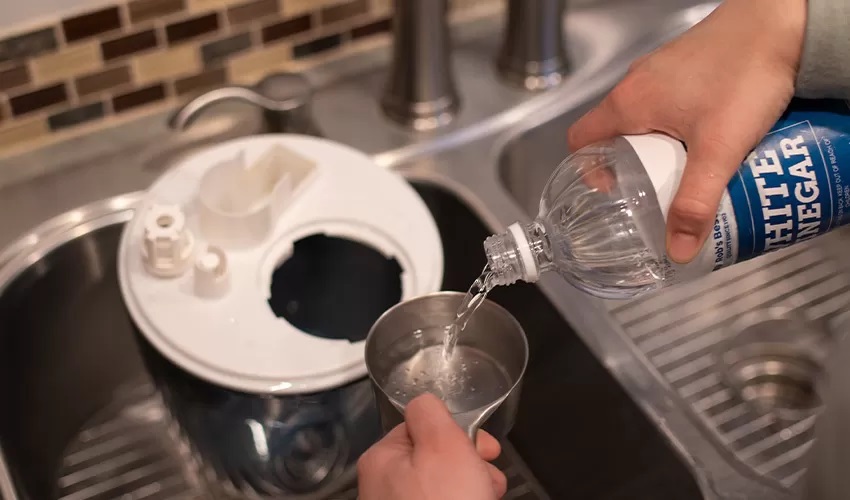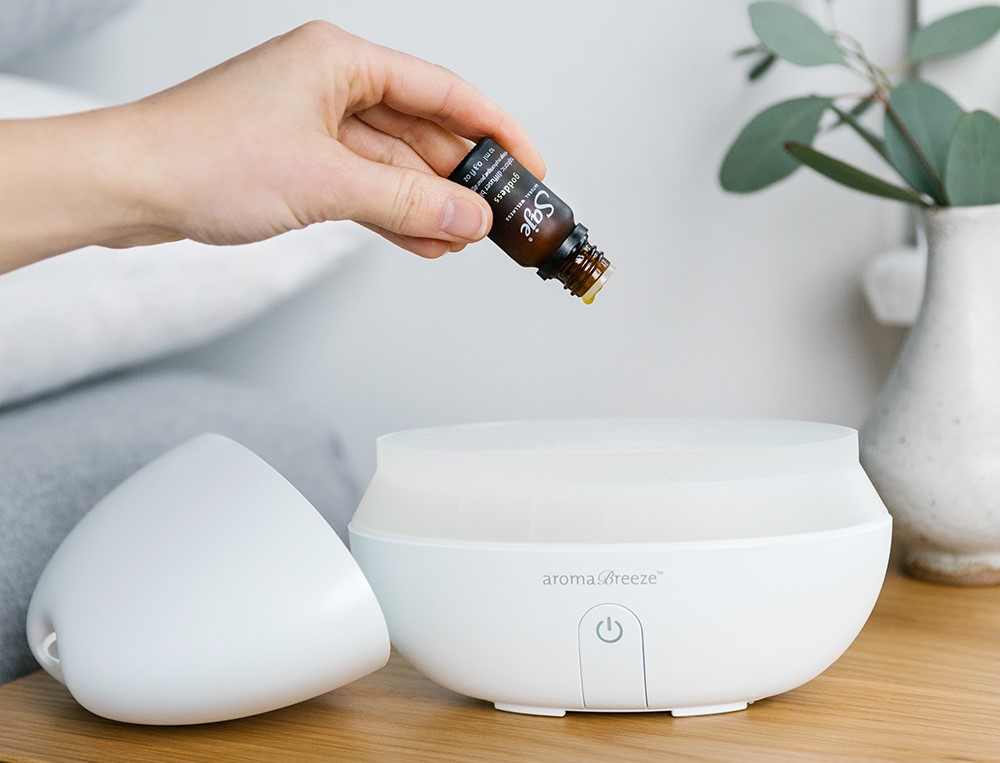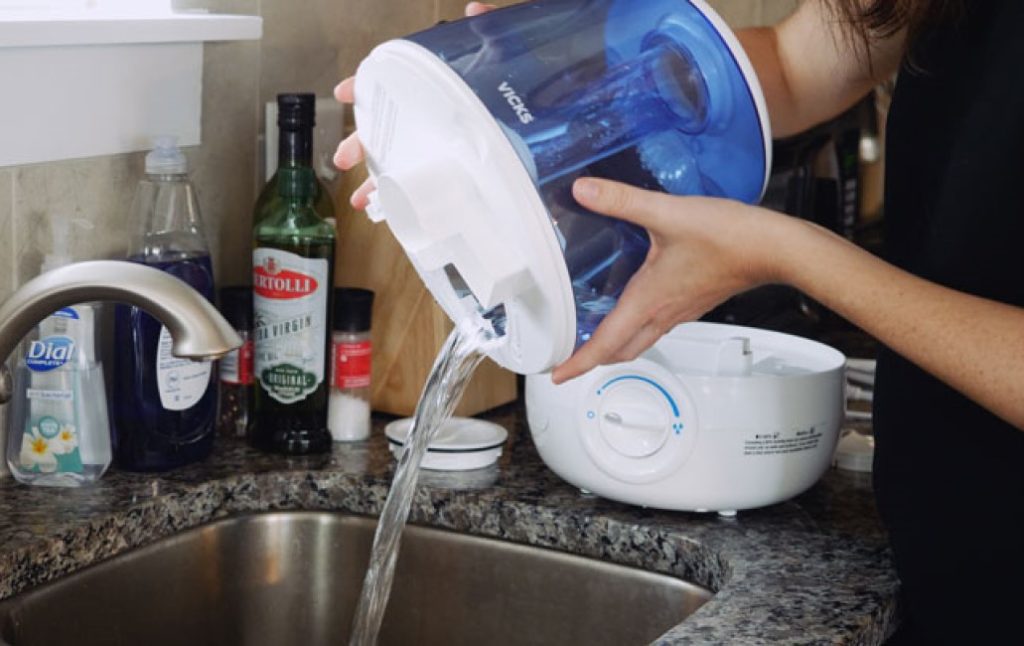

Good air quality also means achieving the right humidity. Too little moisture in the air irritates the mucous membranes and makes your body more susceptible to infections. In order not to expose your health to unnecessary risks in the long term, you should avoid excessively low humidity in the long term.
What is low humidity and why can it make you sick? Which factors can explain dry air in your home and how can it be better managed? In essence, low humidity occurs when there is too little water vapor in the air. Since humans, animals, and even house plants release moisture into the air when they exhale, the humidity is generally too high rather than too low. Nevertheless, low humidity can also occur in winter due to dry heating air. In this article, we discuss everything you need to know about low humidity.
Air humidity describes the proportion of water vapor that is in the air, which is usually invisible to us. Humidity plays an important role in how we perceive the weather and is a meteorological measure.
We usually only notice the humidity consciously through uncomfortably humid weather. Depending on the temperature and air pressure, the air can only contain a certain amount of water vapor, which is referred to as relative humidity.
The humidity is subject to constant changes. During the day and the seasons, it varies depending on the weather.
The optimal humidity level is between 30 and 50 percent Trusted Source COPD and Humidity: Effects and Dangers In general, low humidity levels are best for people with COPD, but every person is different. Learn more about COPD and humidity here, and discover how to find the right humidity levels for you. Also get information on COPD triggers, handling indoor humidity, managing mold in moist environments, and more. www.healthline.com . However, other sources give 40 to 60 percent, while a moisture content of 40 percent is already perceived as low in living rooms, it may be a little lower in the bedroom when the window is closed. By exhaling, moisture is released into the air overnight, so that the content of water vapor in the air in the bedroom increases automatically.
Because what is considered low humidity differs for each room, we have created a clear table for you.
| Ideal Indoor Climate | ||
| Room | Optimal temperature | Optimal humidity level |
| Bathroom | 68–73.5 °F | 50–70% |
| Nursery | 68–73.5 °F | 40–60% |
| Living rooms and workrooms | 68–73.5 °F | 40–60% |
| Kitchen | 64.5–68 ° C | 50–60% |
| Bedroom | 62.5–68 ° C | 40–60% |
| Hallway | 59–64.5 °F | 40–60% |
| Basement, cellar | 50–59 °F | 50–65% |
There are various ways in which you can determine the humidity in your living space. The methodologically simplest procedure does not require high-tech equipment. But in practice, it is also the most cumbersome and imprecise. It is the classical dew point procedure, which uses the relationship between temperature and relative humidity described above. For regular humidity control, however, you should invest in a hygrometer, a device for measuring air humidity that provides more accurate values than the dew point method and is less cumbersome to use.
To measure room humidity with the dew point method Trusted Source Hygrometer - Wikipedia Dew point is the temperature at which a sample of moist air (or any other water vapor) at constant pressure reaches water vapor saturation. At this saturation temperature, further cooling results in condensation of water. Chilled mirror dewpoint hygrometers are some of the most precise instruments commonly available. en.wikipedia.org , all you need is a mirror or a metal plate that you can slowly cool down (e.g. place ice cubes or cool packs on the underside). You also need to be able to hold a thermometer to the surface to get an accurate reading of the temperature.
While the metal plate cools down, the air humidity rises locally: the air cools down directly above the metal surface and the relative humidity rises. The colder the metal becomes, the higher the humidity rises until it finally reaches 100% – the air is now saturated. Further cooling results in condensation on the surface as the metal plate steams up.
The moment you observe the surface fogging, the so-called dew point is reached. Since the temperature and maximum water capacity of the air are closely related, the temperature then measured is a clear indicator of the amount of water present in the air. The more humid the air was at the beginning, the earlier the dew point is reached. To determine the original humidity from the temperature at the dew point, you must use a dew point curve as an aid.
If you don’t feel the urge to experiment, you should get a suitable measuring device. Hygrometers take advantage of the fact that certain substances can absorb water from the air and thereby change their chemical and physical properties.
Historically, the hair hygrometer is a prominent example: the length of a hair can change by up to 2.5% when the air humidity increases from 0 to 100%. Such a change can already be transferred mechanically to a pointer and thus be made visible. Even today there are hair hygrometers based on this method, but many have electrical displays.
Hair hygrometers are some of the most accurate, but also one of the most expensive devices with which you can measure the humidity in the house. In addition, regular maintenance of the devices is necessary to be able to guarantee accurate measurement results over a longer period.
Meanwhile, the most accurate hygrometers are the digital models. One of the most reliable types of these hygrometers is the AcuRite 00613. It’s a digital hygrometer, that can also check for indoor temperature and be easily recalibrated.
If you don’t want to buy a hygrometer, you can even make one by yourself. Check the video below for instructions.
Too low humidity in house affects breathing. Reduced respiratory performance can occur because oxygen is more difficult to get into the bloodstream.
The mucous membranes are also affected when the moisture content in the air is low. The nasal mucous membranes become dry and nosebleeds can occur. The eyes are also irritated and may start to water.
If the room humidity is too low, the mucous membranes are primarily affected by drying out, as they have poorer protection against evaporation, but the rest of the skin also loses moisture and becomes dry. This is why people with dry skin are often advised to use a humidifier – especially one designed for dry skin – when indoors. In addition, skin that has dried out due to insufficient humidity is weakened in its immune defense. This increases the risk of a cold.
If you keep the room humidity too low in the bedroom, this can lead to sleep disturbances. It may be harder to fall asleep and/or you may wake up repeatedly at night.
In the living room and the study, too low humidity becomes noticeable with a headache. So if you suffer from inexplicable headaches in winter, it makes sense to check the humidity of your study.
Anyone who is struggling with too low moisture content in the room air can increase it in several ways and increase their well-being. The best option is to have a whole house humidifier installed. Meanwhile, if you just need an affordable humidifier which you can move between your bedroom to the living room, you can choose a portable humidifier. One of the best and most purchased online is the Everlasting Comfort Cool Mist Humidifier. Quiet and filterless, it is equipped with an essential oil diffuser.
In addition, more indoor plants can be set up. If you water your houseplants regularly, but also spray their leaves with water every day, you are not only doing the plants good, but also your health. Because the water droplets that settle on the leaves of the plant when sprayed can evaporate and thus contribute to the improved indoor climate.
Washing dishes or drying clothes also gives off water vapor into the air and thus increases the relative humidity.
The indoor fountain is not only a unique room decoration but also brings additional water vapor into the living room if the room humidity is too low. This increases the humidity in the room and increases comfort.
When the room humidity is low, you can put the ironing board in the living room and iron it while watching TV. You can increase the moisture content of the living room air due to the rising water vapor that is generated during ironing.
In small apartments, it is also possible to put the hose of the tumble dryer inside in the next room instead of outside. In this way, the air humidity level in the room increases dramatically each time the laundry is dried.
Every room has a different ideal humidity – depending on how it is used. The ideal humidity in the bathroom is different from that in the office.
However, the essential is being able to answer the “what is low humidity” question, and then the causes, effects, and how to improve the air quality. When you have a low humidity situation, then the air is dry. This can cause the mucous membranes to dry out. The result: scratchy eyes, an itchy throat, and dry skin. You may feel weak and often have headaches or nosebleeds.
Fortunately, there are many ways in which you can regulate the air in your home to the ideal level of humidity. There are many home remedies you can use to temporarily increase the humidity. In the long term, this works better with special devices.





